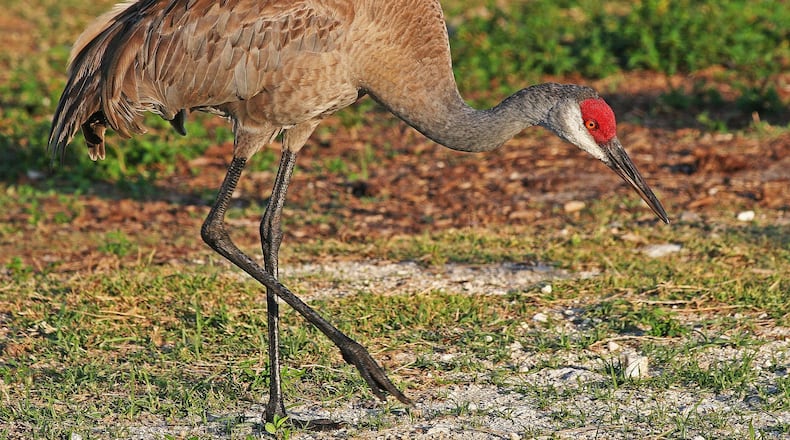If you hear some loud, odd bugle-like calls outside during the next few weeks, keep an eye on the sky: You might get a glimpse of one of nature’s grand spectacles, a V-shaped flock of sandhill cranes flying high overhead.
Their bugling calls can be heard more than a mile away, so you're likely to hear the birds before you see them. A call sounds like a "resonant, rattling gu-rroo, gu-rroo, gu-rroo," according to Giff Beaton, a top Georgia birder.
The Georgia’s birders’ chat line was lighting up this week with reports of southbound sandhills over metro Atlanta — on their way to winter grounds in Georgia’s Okefenokee Swamp, wetlands in Florida and elsewhere. Seeing a high-flying flock of the birds is awe-inspiring, but if you’re doubly lucky you also might get to see them settling down to rest in a field or marsh.
The birds that pass through Georgia are a subspecies dubbed greater sandhill cranes; the adults stand nearly four feet tall and have a wingspan of more than six feet. They breed in the Great Lakes region and in southern Canada.
They also represent the so-called Eastern population, the smallest of six distinct populations of migratory sandhill cranes in North America. Nearly all of the Eastern population’s 26,000 birds migrate through Georgia. (A small, non-migratory group of sandhills also live year-round in the Okefenokee.)
If you’re unfamiliar with sandhill cranes, you might at first think they’re geese. Some differences: Sandhill cranes’ long, thin legs trail behind them in flight, and they have longer, thinner necks than geese. Also, sandhill cranes’ travel in large, loose V-shaped formations high in the sky, often barely visible; geese fly in smaller, tighter, low-altitude V-shaped flocks.
The only other Georgia bird that resembles a sandhill crane is the great blue heron. The sandhill crane is grayish with some rusty brown on the body, and has a prominent, bright red crown.
IN THE SKY: From David Dundee, Tellus Science Museum astronomer: The moon will be last-quarter on Thursday. Mercury is low in the west just after sunset. Venus is very low in the east just before sunrise. Mars is in the southwest at dusk. Saturn is very low in the southwest just after dark.
About the Author
Keep Reading
The Latest
Featured


